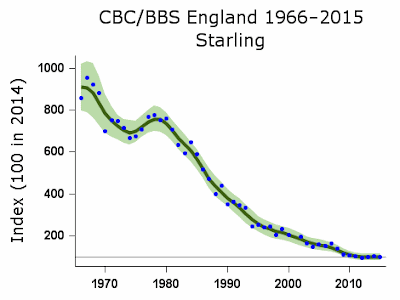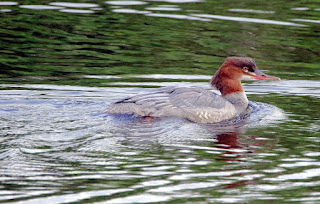Saturday was rubbish for birding so I odd-jobbed, blogged and saved my energy for Sunday. I didn’t get many photos this morning but right at the end is a video that everyone will like.
Braides Farm was first stop this morning where a roadside Buzzard flew off as soon as the car slowed. Our resident Buzzards don’t like being looked at, even less being pictured on bird blogs. Many of our native farmers and country folk have very established opinions about birds with “hook bills” and there’s not much doubt that the local Buzzard population suffers as a result. Hence the aversion to man.
There’s been a large influx of Continental Starlings this week with substantial flocks noticeable. So much so that at Braides/Sand Villa I counted a minimum flock of 1000+ swirling around the cow sheds and the open fields.
Of course the large autumn and winter flocks that visit the UK do not represent the overall status of the Starling. The following paragraph from the BTO (British Trust For Ornithology) website may surprise anyone who thinks Starlings are abundant.
“The abundance of breeding Starlings in the UK has fallen rapidly, particularly since the early 1980s, especially in woodland, and continues to be strongly downward. The map of change in relative density between 1994-96 and 2007-09 indicates that decrease has been widespread across England and eastern Scotland but that some increase occurred in Northern Ireland, western Scotland and Cumbria. Recent data suggest a populations decrease in Scotland and Northern Ireland, where the trends were initially upward. The species' UK conservation listing has been upgraded from amber to red as the decline has become more severe. Widespread declines in northern Europe during the 1990s outweighed increases in the south, and the European status of this species is no longer considered 'secure' (BirdLife International 2004). There has been widespread moderate decline across Europe since 1980”
The Kingfisher was about at Conder Green. It flew around the pool a few times and eventually landed on the sluice wall but didn’t stay more than a few seconds.
The pool water is way down at the moment and it appears that the level is being managed via the sluice for some reason, perhaps to encourage wading birds. If so, it hasn’t worked just yet with my counts remarkably similar to recent ones - 140 Lapwing, 14 Curlew, 32 Redshanks, 6 Black-tailed Godwit, 3 Snipe and 1 Common Sandpiper. Pied Wagtails seem to like the margins with a count of 18 today.
The female Tufted Duck still has four youngsters. At one point I watched her angrily chase off a Cormorant that came too close to the island where the youngsters were hiding up.
I noted a few passerines today in the shape and sound of 10 Goldfinch, 8 Linnet, 4 Reed Bunting and 1 Willow Warbler.
A “quickie” at Bank End revealed a flight of 19 Black-tailed Godwit dropping into the wet fields, an overhead Jay, plus a Grey Heron and 20+ Sand Martin on the quarry pool. On the marsh and living up to its name, a Marsh Harrier and lots of Pied Wagtails.
I stopped off at Gulf Lane and the 120 strong Linnet flock. More than 50 fed quietly in our net ride until I walked in to leave more seed for them. There’s lots of natural seed now but the Linnets obviously like the rape seed too. Looking ahead, Tuesday and/or Wednesday may be OK for a ringing session on the tail end of Hurricane Gert.
On the way home I stopped off to see another Marsh Harrier, 2 Kestrels and a single Buzzard, this time over farmland.
On the way home I stopped off to see another Marsh Harrier, 2 Kestrels and a single Buzzard, this time over farmland.
Meanwhile as a change from gulls that steal ice creams, here’s a video of a town in Alaska with Bald Eagles that like to play Bingo. Enjoy.




































































.jpg)











